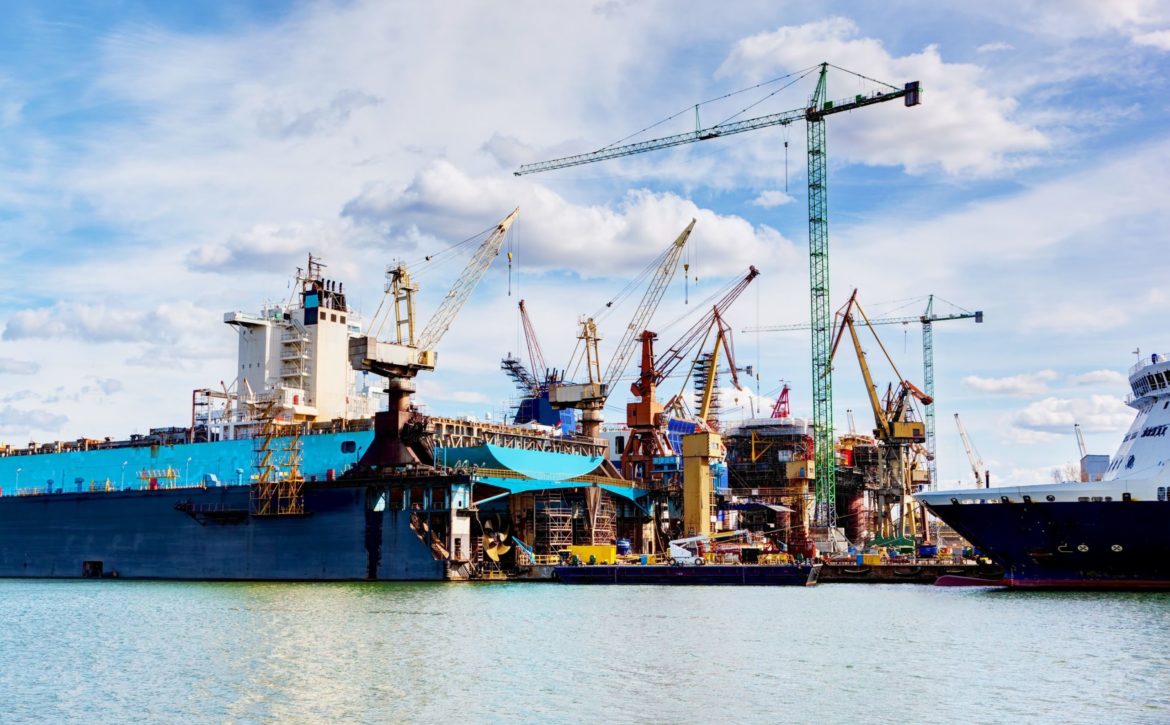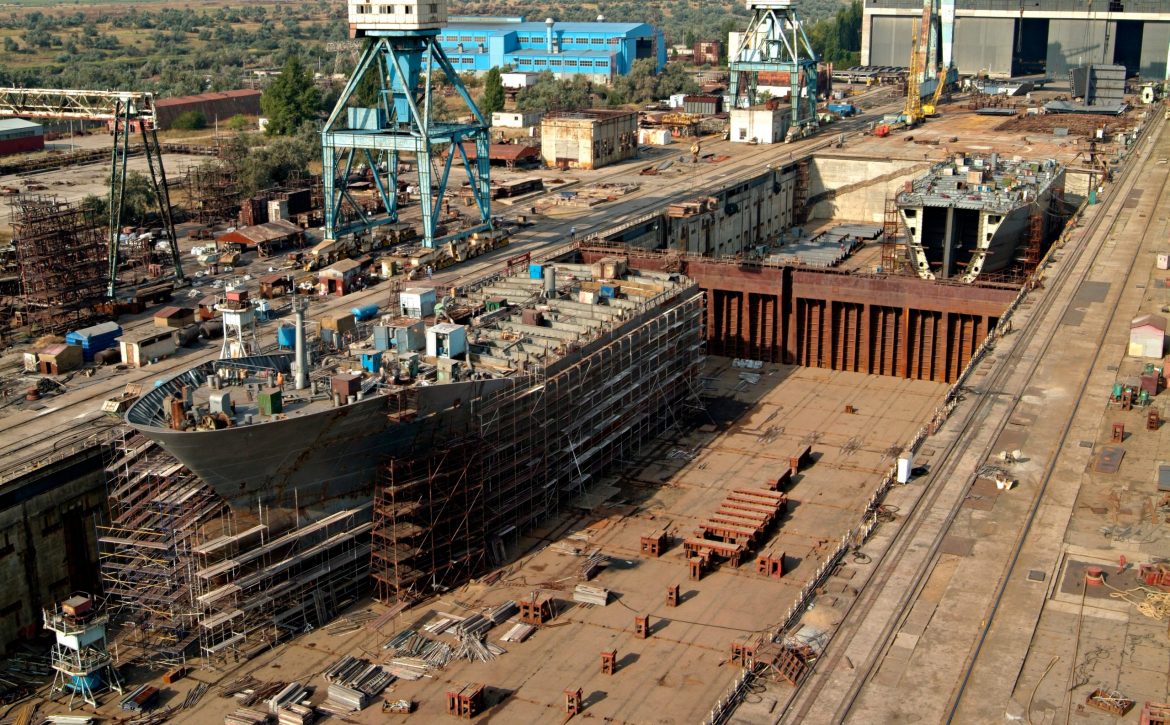New Building Site Team Supervision Selection
In our last article, the focus was on how to choose the right shipyard and the intricacies involved in the shipbuilding process. This time, we are going to take a look at another vital component in shipbuilding, namely the site team. The Site Team (ST) personnel are the ship owners’ representatives. They confirm that ships are built as per the signed contract and technical specifications. Preferably, the Site Team must have a diverse range of professional experiences and a set of responsibilities, as decided by the Site Manager.
The size of the Site Team should be a function of the ship’s size, speed of production and availability of these experts on the market. The “larger” ships require greater surface area’s coverage, hence more effort. If the production speed is “fast” then one ST specialist might not effectively cover what is expected of him/her and more persons of the specialty may be required. If adequate “trust” is assumed for the Shipyard, then the size of the ST can be reduced. On top of their professional skills Site Team members should posses soft Skills as well:
- Be proactive and anticipate problems, as opposed to looking for after-the-fact solutions.
- Work as a team player.
- Cooperate with Shipyard, Equipment Suppliers and Class Surveyors.
- Be good and patient communicators.
In addition, each Site Team member must be healthy / physically fit and be specifically insured by Ship Owners for traveling abroad, against all types of accidents, occupational hazards, health impairment, treatment of any illness. Here follows a typical list of necessary Site Team personnel, all reporting to site manager, each person described with the desired characteristics for the position:
Site Manager (SM)
Must be a trusted, articulate and experienced Naval Architect. His professional experience could be linked to the value of the project. Preferably SM must be senior to everybody else involved in site team with “in-field” managerial experience. Strict Naval Architectural background is necessary so that the SM will cover the widest possible technical background on ships, a qualification, which cannot be earned or compensated by experience.
SM must:
- Be a “wide-knowledge”, respected integrator
- Be in charge of overall new buildings activity.
- Act as a Ship Owner’s official representative to Shipyard.
- Be the head of Site Team and the only link of Site Team with the Ship Owner.
- Organize and supervise all Site Team activities.
- Be responsible for Site Time safety and welfare.
- Legally represent all Site Team members abroad.
- Apply Contract terms and Specifications.
- Maximise benefits for Ship Owner.
- Give priorities for daily actions.
- Provide all site office and personnel necessities.
Hull and Outfitting Supervisor (HS)
The Hull Supervisor can be an ex-Shipyard production foreman, minimum fifteen (15) years’ experience, or a Shipyard naval architect with minimum five (5) years production supervision experience. Must have:
- “Hands-on” Shipyard production experience.
- Welding standards and methodology knowledge
- Steel quality & metallurgical knowledge
- Blocks assembly knowledge
- Structural alignments knowledge.
- Detailed knowledge of (local) outfitting’s standards and assembly practices.
- Must understand non-destructive testing procedures / application.
Mechanical Supervisor (MS)
At least chief engineer’s qualifications and five (5) years ships repairs work experience is required. Alternatively, a university graduate in marine engineering with minimum ten (10) years practical ship operations / repairs experience. Must be:
- Ability to check multiple interacting ship’s systems details.
- Must feel confident and resourceful dealing with mechanical, hydraulic, pneumatic, electrical, electronic systems
- Wide ranging systems knowledge.
- Patient in analytical quality control procedure.
Corrosion Protection Supervisor (CPS)
Can be ex-shipyard painting/Blasting foreman with minimum ten (10) years experience in new building process or Corrosion Engineer. Must be:
- FROSIO (red) or NICE 2 certified.
- Must have painting specifications knowledge and know where problems arise.
- Ideally CPS must have been involved in ship’s structural repairs
- Must know surface preparation standards and various means used for surface preparation by Shipyards.
- CPS complements the steel work supervisor.
- Knows corrosion mechanisms and means to combat them.
- Intimately understands paint technology and its field application limitations.
- Knows how to conduct practical field tests relating to paints coatings adhesion, thickness, damage repairs, dust/dirt control, humidity and temperature.
Electrical / Electronics / Automation / Communications (EEAC) Engineer
EEAC must be a University graduate Electrical engineer with minimum (5) years repairs & five (5) years new buildings experience, or a electrical field engineer of higher education who has minimum ten (10) years repairs experience in mixed electrical, electronic, automation & communications. Must be:
- Must be able to read electrical installations and electronic circuitry drawings.
- Refer to standards and appropriate practices as well as propose practical solutions.
- Must understand subsystems functions and expert in components circuitry.
- Must be able to integrate ship’s systems with automation.
HSE Supervisor
It is relatively new function in the newbuilding supervision Site team and even now there are projects where this position is missing. In line with HSE policy of the Ship Owning companies, there should be somebody who implements and follows-up these polices in the place where the vessel is being build. Often, there are clashes with Shipowners’ company policy and Shipayrd HSE Policy thus presence of HSE will be a plus in solving these issues.
Commissioning Engineers (Mechanical/Electrical)
It is not common for most of Site Teams to have this specialists, however when project have long series of vessels and though schedule presence of above-mentioned specialists on site is recommendable.
Secretary
The secretary is SM’s assistant and the heart of the Site Team. Ideally he/she must:
- Local person, experienced in dealing with shipbuilding Site Teams working under pressure.
- Not have any links with the Shipyard, so as to reduce chances of accidental project-specific information “leaks”.
- Keep the site office surroundings & records in order.
- Arrange for ST overalls routine cleaning, availability of office consumables and office good presentation.
- Collect and distribute all incoming / outgoing correspondence, information, drawings, inspections etc.



